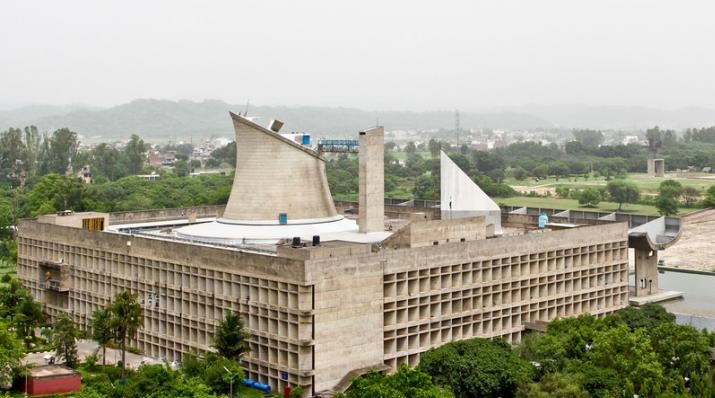 The Punjab government’s decision to hold a special Vidhan Sabha session in Anandpur Sahib on November 24, 2025, has sparked considerable debate over the scale of investment being made for what amounts to a single-day legislative event. While the session is part of commemorations marking the 350th martyrdom anniversary of Guru Tegh Bahadur, critics argue that the financial commitment appears disproportionate to the duration and practical necessity of moving the entire assembly apparatus outside Chandigarh for just one day.
The Punjab government’s decision to hold a special Vidhan Sabha session in Anandpur Sahib on November 24, 2025, has sparked considerable debate over the scale of investment being made for what amounts to a single-day legislative event. While the session is part of commemorations marking the 350th martyrdom anniversary of Guru Tegh Bahadur, critics argue that the financial commitment appears disproportionate to the duration and practical necessity of moving the entire assembly apparatus outside Chandigarh for just one day.
The most striking aspect of this investment is the infrastructure being created specifically for this brief session. A specially designed tent is being erected at the Bhai Jaitaji Memorial complex that aims to replicate the Punjab Assembly building in Chandigarh. This temporary structure, meant to function for just a few hours, requires significant financial resources and represents what critics view as an extravagant expense. The creation of a makeshift assembly hall that mimics the actual legislative building raises questions about whether such elaborate arrangements are justified for a single session, especially when the regular assembly facilities in Chandigarh remain available.
Beyond the assembly structure itself, the government has undertaken massive road infrastructure projects specifically timed for this event. Three hundred seventeen kilometers of roads connecting Sri Anandpur Sahib are being upgraded at a cost of ₹100 crore. While improved roads benefit residents long-term, critics point out that this substantial investment is being rushed to completion on an accelerated timeline specifically for the commemoration, potentially leading to higher costs and quality concerns. The question being raised is whether this expenditure could have been planned more strategically and spread over a longer period rather than being compressed into an urgent, pre-event deadline that may result in cost overruns.
The beautification efforts for Anandpur Sahib have also been extensive and costly. Lakhs of litres of white paint have been distributed free of cost to residents across the city to help transform the façade into a uniform “white heritage look.” While such aesthetic improvements are meant to honor the occasion and create a visually cohesive environment, the scale and urgency of this expenditure specifically for the event has raised eyebrows. Critics argue that while beautification is laudable, the government appears to be prioritizing appearance over substance, investing heavily in temporary or cosmetic improvements rather than addressing more fundamental developmental needs.
The government has also established extensive temporary facilities to accommodate visitors during the broader commemoration period from November 21-26. These include three tent cities for 11,000 devotees, 106 acres of parking space, and free transport through 500 e-rickshaws and 100 mini-buses. While these facilities serve the multi-day event, a significant portion of the expense is justified by the assembly session itself. The temporary nature of much of this infrastructure means that substantial public funds are being spent on facilities that will be dismantled shortly after use, rather than creating permanent assets that would benefit the community for years to come.
These expenditures become particularly controversial when viewed against Punjab’s current financial situation. The government has sought Rs 1,000 crore from the Greater Mohali Area Development Authority (GMADA) to help address its ongoing financial crisis. Opposition leaders have accused the AAP government of financial mismanagement, with Leader of Opposition Partap Singh Bajwa stating that “the AAP government was resorting to selling the family silver in the form of the land bank” to address budget shortfalls. This context makes the decision to invest heavily in a ceremonial one-day assembly session appear tone-deaf to critics who believe the state’s limited resources should be directed toward addressing pressing fiscal challenges, healthcare needs, education infrastructure, and sustainable economic development.
The implementation of these projects has also faced challenges that suggest poor planning and potential waste. Ground visits indicated that the pace on several stretches remained sluggish, with insiders in the administration admitting that cooperation gaps within certain sections of the Public Works Department (PWD) had contributed to delays in meeting timelines. Large pockets of the town still displayed unpainted structures, and several beautification and facade-improvement tasks in the core religious zone remained incomplete despite the significant expenditure. These execution problems suggest that despite throwing money at the preparations, the government may not achieve its intended results, potentially meaning that funds have been spent inefficiently without delivering the promised transformation.
The fundamental question critics are raising is not about the importance of commemorating Guru Tegh Bahadur’s martyrdom, which is widely respected and supported across political lines. Rather, the concern centers on whether creating a temporary replica of the assembly building, upgrading hundreds of kilometers of roads on a crash basis, investing in extensive temporary infrastructure, and undertaking massive beautification specifically for a single-day legislative session represents prudent use of taxpayer money. The symbolic gesture of holding the assembly in Anandpur Sahib is meaningful to many, but critics argue that the same respect and commemoration could have been shown through other means that wouldn’t require such substantial financial outlay for a brief event.
In essence, the controversy reflects a broader debate about government priorities and fiscal responsibility. While no one disputes the significance of the occasion being commemorated, many question whether the scale of investment in infrastructure and arrangements that are largely temporary or rushed can be justified when the state faces financial constraints and has numerous ongoing developmental needs. The concern is that the government appears to be prioritizing optics and a single high-profile event over the practical, sustained investments in infrastructure, services, and fiscal stability that would benefit Punjab’s citizens more meaningfully in the long term.